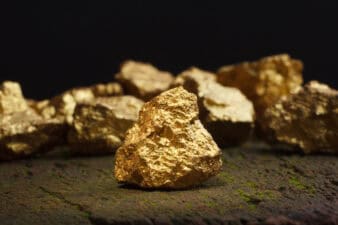The last year was a tough time for platinum miners. The durable white metal, which, in the runup to the Global Financial Crisis by mid-2008, was trading at over US$2,150 an ounce, has fallen sharply to be worth US$863 per ounce and down by almost 10% for the year to date. There are signs that platinum is due to break out of its long-term slump and move higher, which will be a boon for platinum miners like Ivanhoe Mines (TSX:IVN).
Why has platinum failed to perform?
Much of platinum’s woes can be attributed to a widening supply surplus since 2016. The surplus is being caused by growing supply and decreasing demand, which stems from the Volkswagen diesel emissions scandal, which sparked a significant increase in the popularity of gasoline-powered vehicles to the detriment of those that are diesel fueled.
You see, while platinum is a key element used in the fabrication of catalytic converters for diesel-powered automobiles, palladium is used as a catalyst in gasoline-fueled vehicles. The loss of market share for diesel-fueled vehicles has weighed on platinum.
Emerging catalysts
There is a range of emerging tailwinds that should lift platinum over the course of 2019 and into 2020. For example, China has increased the demand for auto-catalysts, which should increase the consumption of platinum as well as palladium. That combined with China’s ever-expanding middle class and rising demand for automobiles will support greater demand for both metals.
The marked increase in palladium, which is now the most expensive of the precious metals, has created an incentive for auto manufacturers to find substitutes for use in the fabrication of catalytic converters. Because platinum shares similar qualities to palladium and is far cheaper, it could become the substitute of choice for use in auto catalysts. This would be a positive catalyst for the precious metal.
A key factor weighing on platinum is that supply is exceeding demand, but for the reasons discussed, analysts expect the supply overhang to diminish during 2019. Supply disruptions triggered by labour disputes in South Africa have helped to buoy prices. For the reasons discussed, there is further upside ahead as demand for platinum grows. Higher gold will also boost prices because of the closely correlated relationship between the two precious metals.
What does it mean for investors?
Ivanhoe Mines is up by 37% for the year to date and poised to rally higher as platinum firms. The miner’s flagship asset is the Platreef project in South Africa in which it owns a 64% interest. The property has been determined to have reserves of 17.6 million ounces of platinum, palladium, rhodium, and gold combined. The mine, on achieving the first phase of commercial production, is forecast to produce 476,000 ounces of platinum, palladium, rhodium, and gold on average annually with average life of mine all-in sustaining costs of a very low US$351 per ounce sold.
This highlights the considerable profitability of the mine, particularly when it is considered that gold is expected to rally higher and palladium is trading at close to record highs of over US$1,580 an ounce. As platinum firms, it will act as an additional tailwind for Ivanhoe. For a development-stage miner, Ivanhoe has a solid balance sheet, ending 2018 with almost US$540 million in cash and US$31 million in debt, indicating that it has enough capital to complete the Platreef project, enhancing its appeal.
Ivanhoe is one of the most attractive levered plays on firmer platinum and it will rise in value as palladium and gold firm, making now the time for risk-tolerant investors to acquire the miner.






